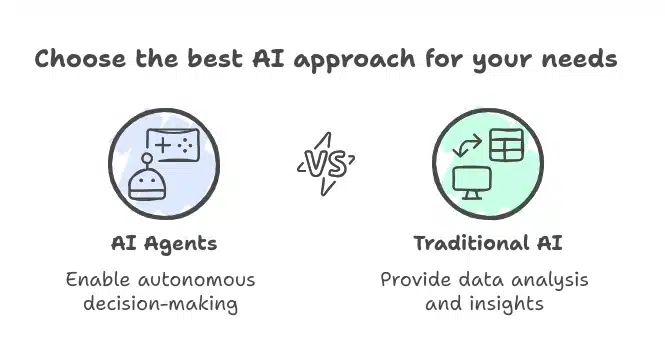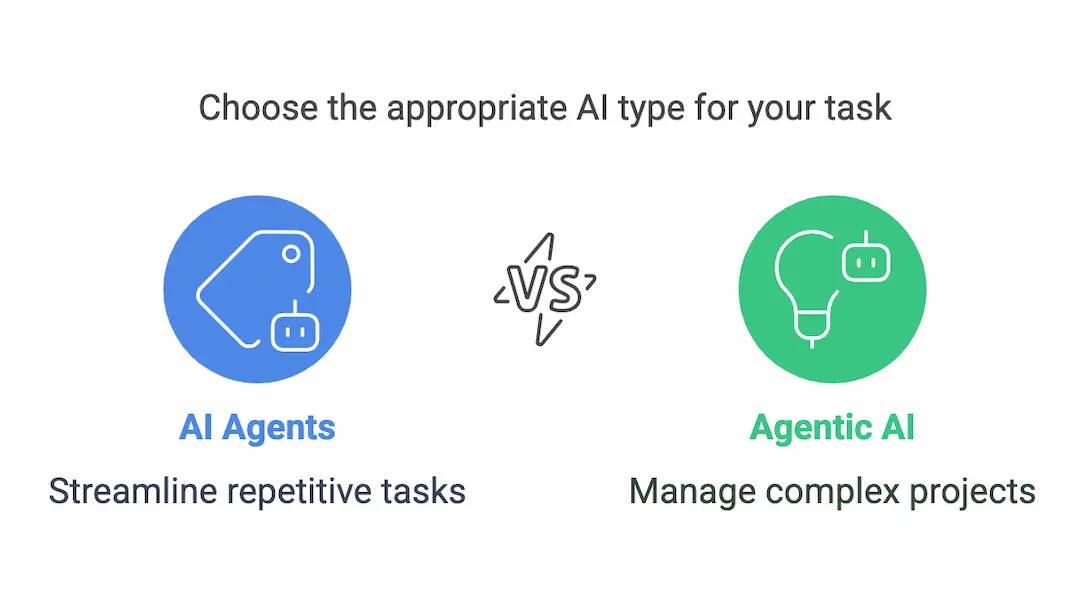Building AI agents has become a popular endeavour among developers, and using Ruby makes it accessible and enjoyable. This beginner-friendly guide will walk you through the process of creating AI agents with Ruby, making it easy to get started even if you're new to AI development.
Free AI Agents Course: Learn to Build and Use AI Agents
Learn how to build, train, and deploy AI agents for free! Explore hands-on techniques and tools to create intelligent, autonomous systems.
What Are AI Agents?
An AI agent is a system designed to perform tasks that typically require human intelligence. These agents can make decisions, learn from data, and adapt to new situations. Some common types of AI agents include:
- Chatbots that interact with users.
- Recommendation systems that suggest products, services, or content.
- Data processors that analyze and transform datasets.
AI agents are used across many industries, including customer service, healthcare, and finance. Understanding the purpose of AI agents is crucial for framing the development process and highlights why Ruby is a great choice for building them.
Learn more deeply about what AI Agents are and their types
Why Use Ruby for AI Development?
Ruby is a great option for AI, especially for those already familiar with it. Its simple syntax allows for quick prototyping. While not as fast as Python for large tasks, Ruby’s libraries like ruby-ml make AI development easy and efficient for smaller projects.
What You'll Need
Before we begin building your AI agent, ensure you have the following:
- A computer (Windows, macOS, or Linux).
- Internet access.
- Basic curiosity—no coding experience required!
Choose Your AI Agent Type
The first step in building an AI agent is deciding what type of agent you want to create. Here are some examples:
- Chatbots: For automating conversations with users.
- Recommendation Systems: To suggest products, services, or content.
- Data Processors: For analyzing and transforming datasets.
Having a clear goal in mind will guide your development process.
Step-by-Step Guide: Building a Simple AI Agent in Ruby
If you haven’t set up your Ruby development environment yet, watch this video to learn how to set up Ruby in VSCode and get everything ready to go.
Step 1: Install Required Gems
To build an AI agent in Ruby, we need to install the ruby-ml gem. It provides the necessary tools for machine learning algorithms like decision trees. Run this command to install the gem:
gem install ruby-ml
Step 2: Create a Basic Ruby Script
Create a new Ruby file named ai_agent.rb and open it for editing. This will be where we write the code for our AI agent.
Step 3: Import Required Libraries
Next, we import the ruby-ml gem and set up the decision tree classifier.
require 'ruby-ml'
Step 4: Prepare Sample Data
We’ll use a small dataset to train our AI agent. The dataset will classify whether a person will go outside based on the weather conditions (Outlook and Temperature).
# Sample data: [Outlook, Temperature] => Go Outside?
data = [
['Sunny', 'Hot', 'No'],
['Sunny', 'Hot', 'No'],
['Overcast', 'Hot', 'Yes'],
['Rainy', 'Mild', 'Yes'],
['Rainy', 'Cool', 'Yes'],
['Rainy', 'Cool', 'No'],
['Overcast', 'Cool', 'Yes'],
['Sunny', 'Mild', 'No'],
['Sunny', 'Cool', 'Yes'],
['Rainy', 'Mild', 'Yes'],
['Sunny', 'Mild', 'Yes'],
['Overcast', 'Mild', 'Yes'],
['Overcast', 'Hot', 'Yes'],
['Rainy', 'Hot', 'No']
]
Step 5: Define Features and Labels
The features are the input data (Outlook and Temperature), and the labels are the output data (whether the person will go outside or not).
# Define the features and labels
features = data.map { |row| row[0..1] } # [Outlook, Temperature]
labels = data.map { |row| row[2] } # [Go Outside?]
Step 6: Initialize and Train the Decision Tree
We will now initialize a Decision Tree model and train it with our sample data.
# Initialize the DecisionTree
tree = RubyML::Classification::DecisionTree.new
# Train the model
tree.train(features, labels)
Step 7: Test the Model
After training the model, we can test it with new data (e.g., Overcast and Cool) to see if the agent predicts whether the person will go outside.
# Test the agent with new data
test_data = [['Overcast', 'Cool']] # New data to predict
# Predict if the person will go outside
prediction = tree.predict(test_data)
puts "Prediction for #{test_data}: #{prediction}"
Full Code for the AI Agent
Here’s the complete code for the AI agent:
require 'ruby-ml'
# Sample data: [Outlook, Temperature] => Go Outside?
data = [
['Sunny', 'Hot', 'No'],
['Sunny', 'Hot', 'No'],
['Overcast', 'Hot', 'Yes'],
['Rainy', 'Mild', 'Yes'],
['Rainy', 'Cool', 'Yes'],
['Rainy', 'Cool', 'No'],
['Overcast', 'Cool', 'Yes'],
['Sunny', 'Mild', 'No'],
['Sunny', 'Cool', 'Yes'],
['Rainy', 'Mild', 'Yes'],
['Sunny', 'Mild', 'Yes'],
['Overcast', 'Mild', 'Yes'],
['Overcast', 'Hot', 'Yes'],
['Rainy', 'Hot', 'No']
]
# Define the features and labels
features = data.map { |row| row[0..1] } # [Outlook, Temperature]
labels = data.map { |row| row[2] } # [Go Outside?]
# Initialize the DecisionTree
tree = RubyML::Classification::DecisionTree.new
# Train the model
tree.train(features, labels)
# Test the agent with new data
test_data = [['Overcast', 'Cool']] # New data to predict
# Predict if the person will go outside
prediction = tree.predict(test_data)
puts "Prediction for #{test_data}: #{prediction}"
Step 8: Run the Script
To run the script and see the output, simply execute the following command in your terminal:
ruby ai_agent.rb
Expected Output
You should see a prediction similar to:
Prediction for [["Overcast", "Cool"]]: ["Yes"]
This means that the AI agent predicts that the person will go outside when the outlook is "Overcast" and the temperature is "Cool."
Deploy Your AI Agent
Once your agent is functional, you can deploy it in different environments:
- For Web Applications: Integrate the agent into a Ruby on Rails web app.
- For Command-Line Tools: Package it as a standalone Ruby script.
- For APIs: Create a service using Sinatra or Rails API mode.
Consider hosting your agent on cloud platforms like Heroku or AWS.
Besides this, AI agents are being used in development of technologies like big data analytics, machine learning-based model development, and predictive analytics.
Optimize and Maintain Your AI Agent
AI agents evolve over time. Your system must perform performance checks and gather customer feedback which leads to updates in logic systems and training datasets. Profit from automation through Cron jobs scheduling to conduct retraining sessions.
Final Thoughts
Ruby provides a solution to develop AI agents even though the initial process might appear challenging if you have proper tools and techniques.
Programs that begin with basic structures will evolve into more complex systems once users learn the process better.
Ruby stands out through its powerful community structure coupled with adaptable codebase while remaining a perfect environment for developing AI applications.
Whether you're building a chatbot, recommendation system, or data processor, Ruby offers the tools you need to bring your ideas to life.
Related Courses:
Frequently Asked Questions
1. Why use Ruby for AI development?
Ruby is easy to learn, with clean syntax, making it great for building AI agents quickly. It's also a good choice if you're already comfortable with the language.
2. What types of AI agents can I build with Ruby?
You can build chatbots, recommendation systems, or data-processing agents, depending on what task you want to automate.
Also Read: Best Programming Languages for AI Development
3. Is Ruby good for machine learning?
While Ruby isn't as popular as Python for machine learning, it has libraries like ruby-ml that make it great for smaller projects and learning the basics.
4. Can I deploy my AI agent built in Ruby?
Yes, you can deploy it as a web app with Ruby on Rails, a command-line tool, or even an API using Sinatra or Rails API mode.






